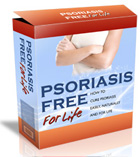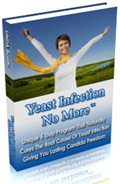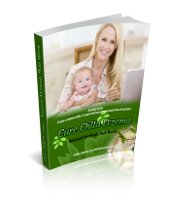I had an interesting concerned letter from a family friend. I thought this was so insightful, that a ha moment, she just could not help but share it with friends and relatives, so I would like to share this with you… about the dangers of using diapers, sanitary napkins and tampons.
My additional note to poor parents are for those who buy discount, un-branded baby diapers. It is true, that these diapers are from the same manufacturers but they have defects. Good if the defects are just cosmetic, but some defects are just plain chemical. Too much of some chemical. Scary.
My additional note from Hulda Clark is that she has tested most diapers as having mercury in them. Ooohh, the most toxic metal on earth.
The truth of the matter is, when push comes to shove, when the chips are down, when it is an emergency, drop all conveniences and go back to nature.
Thinking about it, indeed it’s true. Females use sanitary napkins and tampons every month whether we like it or not. Worst, most of us use panty shields daily. Truth is we do not even know exactly what we put down there closest to our reproductive organ. Exposure to whatever chemicals are in the sanitary napkin, tampons, and panty shield is indeed regular and constant. I use them because of two main reasons: I think they are sanitary and very convenient. Now, after reading the article below, it seems that the only reason why I will continue to use it is because its convenience.When I was in HS, my classmate and I had to report on “Mga Kasuotan ng mga Filipina Noon” . Our teacher emphasized that we needed to include the “salawal” and what women do then during their period. Our teacher suggested that we interview our mothers, aunts, grandmothers and this professor in U.P. who have done studies about it and thus, is considered an expert in such field. When you’re a teenager, it’s gross and yucky to talk about it among yourselves much more discuss it with your mom, aunts, and grandmas. We thought we’ll just head on and interview an expert before our family and relatives, in that way, we can appear very scholarly when we talk to them by quoting whatever the expert will say. Lo and behold! The expert is a middle aged male. WHAT!!! My classmate and I wanted to disappear into thin air. It was SOOOOOOOOOO embarassing. Imagine discussing clothes with emphasis on underwear and period with a male. So what if he’s an expert. He is still a male! The good thing was it made our succeeding interview with the female relatives easier.That report project DID NOT make sense to me up until I read the article below. Even without statistics and only basing on anecdotal evidence. Women then seemed more hygenic, have less tendeny to develop to cervical cancer, bacterial infection, or infertility and the like. Why?
- When they have their periods they are so particular that their “pasador” has to be cotton and within the day they change their “pasador” several times because its not as absorbent as the napkins/tampons now. Since they do not have panty shields, they also change their cotton underwear (full panty not bikini and not g-string) twice or thrice a day. They do not wash their cotton underwear with strong harsh detergent, they use perla for the modern women, while for the more traditional ones, they use a certain kind of bark/root of a plant as a a soap. The same “soap” they use for their body. I don’t know if its the same as “gugo” . But definitely, its 100% organic.
- The older ones who use “patadyong” (it’s like malong or sarong but its wider and the vertical ends are sewn together), do not wear underwear at all. That is why long ago the sign “bawal umihi dito” in the street or fence of a house or side of an establishment is both directed to men and women. Women will just untie the knot of their patadyong, widen the opening of the cloth, as if they have a curtain or cloth barrel around them, spread their legs and pee while standing up. Yes, standing up. Some sits too but its more difficult to sit with the size of the patadyong. After, they pee they use the patadyong (washed with organic soap) to wipe themselves. Voila! How about when they have their period, same as 1. They use a cotton full panty underwear and pasador.
- For most, when they have their period, they just stay at home sitting or lying down. Most are forbidden to take a bath. The sitting and lying down, I get it, but the not taking a bath, I’m sure the reason is kinda crazy yet after years of scientific studies it will be discovered that there is wisdom and sense in it.
If the article below is a fact, what danger do we expose babies by making them wear disposable diapers as soon as they are brought into this world. Seems to me, it makes use of the same material as napkins, tampons, and panty shield.Well, all of the negative effects are the direct result of choosing convenience over health. Today, convenience rule! Tsk tsk and we’re all victims of it. Sad to say but I don’t think I’ll ever use “pasador”. Hmmm…. on long drives when I do not have my period… don’t be shock if you see me in a patadyong. No peeping, please hahahaItin
Use of sanitary for more than 3 hours can cause cervical cancer & bacteria infection.FOR THOSE OF US WHO USE SANITARY NAPKINS/PADS:
IF u ever wondered what were the ingredients that made popular brands so
‘free! and light and carefree’, well here’s the bit:The material that makes the pad so paper THIN , is cellulose gel. YEap,
it’s not even cotton…DO NOT wear the same pad for more than 3 hours of a maximum. After
this duration, the genital area is prone to bacterial action and may
result in cervical cancer or other complications.REMEMBER! NEVER NEVER NEVER WEAR THE SAME PAD FOR MORE THAN 3 HOURS!!!
SO yes, please pass on this message to as many women as possible and
save lives!!!!!!!!!!If you are a woman and use pads, but especially if you use tampons,
Read this and pass it on to your friends.
For the men receiving this email,
please forward it to your friends, significant others, wife, sisters, mothers,
daughters, etc.) Thanks!Check the labels of the sanitary pads or tampons that you are going to
buy the next time and see whether you spot any of the familiar signs
stated in this email.No wonder so many women in the world suffer from cervical cancer and
womb tumors. Have you heard that tampon makers include asbestos in
tampons? Why would they do this?Because asbestos makes you bleed more, if you bleed more, you’re going
to need to use more. Why isn’t this against the law since asbestos is so
dangerous? Because the powers that be, in all their wisdom (not), did
not consider tampons as being ingested, and, therefore, didn’t consider
them illegal or dangerous.
This month’s Essence magazine has small article about this and they
mention two manufacturers of a cotton tampon alternative. The companies
are: Organic Essentials @1-800) 765-6491 and Terra Femme @(800)755-0212.A woman getting her Ph.D. at University of Colorado at Boulder sent the
following: ‘I am writing this because women are not being informed about
the dangers of something most of us use: tampons. I am taking a class
this month and I have been learning a lot about biology and women,
including much about feminine hygiene. Recently we have learned that
tampons are actually dangerous (for other reasons than TSS ). I’ll tell
you this – after learning about this in our class, most of the females
wound up feeling angry and upset with the tampon industry, and I for
one, am going to do something about it To start, I want to inform
everyone I can, and email is the fastest way that I know howHERE IS THE SCOOP…
Tampons contain two things that are potentially harmf ul: Rayon (for
absorbency), and dioxin (a chemical used in bleaching the products). The
tampon industry is convinced that we, as women, need bleached white
products in order to view the product as pure and clean. The problem
here is that the dioxin, which is produced in this bleaching process,
can lead to very harmful problems for a woman. Dioxin is potentially
carcinogenic cancer-associated)and is toxic to the immune and
reproductive systems. It has also been linked to endometriosis and lower
sperm counts for men. For both sexes, it breaks down the immune system.Last September, the Environmental Protection Agency (EPA) reported that
there really is no set ‘acceptable’ level of exposure to dioxin given
that it is cumulative and slow to disintegrate. The real danger comes
from repeated contact Karen Couppert ‘Pulling the Plug on the Tampon
Industry’). I’d say using about 4-5 tampons a day, five days a month,
for 38 menstruating years is ‘repeated contact’, wouldn’t y! ou? Rayon
contributes to the danger of tampons and dioxin because it is a highly
absorbent substance. Therefore, when fibers from the tampons are left
behind in the vagina (as usually occurs), it creates a breeding ground
for the dioxin. It also stays in a lot longer than it would with just
cotton tampons. This is also the reason why TSS (toxic shock syndrome)
occurs.WHAT ARE THE ALTERNATIVES?
Using feminine hygiene products that aren’t bleached and that are all
cotton. Other feminine hygiene products
(pads/napkins) contain dioxin as well, but they are not nearly as
dangerous since they are not in direct contact with the vagina. The
pads/napkins need to stop being bleached, but, obviously, tampons are
the most dangerous.So, what can you do if you can’t give up using tampons? Use tampons that
are made from 100% cotton, and that are UNBLEACHED. Unfortunately, there
are very few companies that make these safe tampons.. They are usually
only found in health food stores.Countries all over the world ( Sweden , Germany , British Columbia , etc.)
have demanded a switch to this safer tampon, while the U.S. has decided
to keep us in the dark about it. In 1989, activists in England mounted a
campaign against chlorine bleaching. Six weeks and 50,000 letters later,
the makers of sanitary products switched to oxygen bleaching (one of the
green methods available) (MS magazine, May/June 1995).WHAT TO DO NOW?
Tell people. Everyone. Inform them. We are being manipulated by this
industry and the government, let’s do something about it! Please write
to the companies: Tampax(Tambrands), Playtex, O.B.. , Kotex. Call the 800
numbers listed on the boxes. Let them know that we demand a safe product
ALL COTTON UNBLEACHED TAMPONS.References:
1 Women Health Issues – Thrush






For all the above reasons this is why I no longer use tampons. I found something called Winalite it is a sanitary pad free of chemicals and synthetic materials. It is very unique in that is has something called an anion strip embedded in every pad it is antibacterial and has numerous benefits. I recommend for anyone who is looking for an alternative to the every day tampon or pad to please check out this site. It is full of great information and can only be beneficial to to you.
Brassieres are also notorious for containing formaldehyde! It is a carcinogen and a poison. Also, bras and their predecessor corsets are strongly associated with fibrocystitis & cancer of the breasts. The female body, while hardier in the cardiovascular area, is more sensitive to hormones & chemicals.